I confess, I’m a shortcut platform junkie. I have used most of the ones mentioned in the Hink article at least once. They have helped me in my work and in my personal life but I can see the limitations.
As the article explains, these platforms have become just another way for students to try to ‘get
the right answer.’ They are haunted by the ghosts of education past that say that students should be filled with facts and figures. Those facts are then regurgitated onto a worksheet or standardized test. This model of education continues to permeate our system and many of the tools we use to try to extend beyond it continue to limit students within the context of rules and boundaries. The Powtoon below both describes this idea and is also an example of the limiting features of these types of platforms. Just check out this Powtoon by another student in a different class to see how limiting they can be – we created something very similar and we don’t even know each other (somehow I think we even sound the same!)
I do want to challenge the article in one way. Many of these platforms can act as a scaffolding tool to something bigger and better. Especially in the junior years I believe they definitely have a place in getting students creating digital content, even if it is within certain parameters. One of Hinks criticisms of shortcut platforms is students believe they are “guaranteed [a] working product at the end with little risk of failure.” Students need to learn to take risks but sometimes they need an opportunity to create something with a small risk. Once they are comfortable in an area, they are more likely to move beyond it to something more challenging. And believe me, there is no guarantee even on a platform like Powtoon that everything will turn out they way you want it to. I was ready to give up on mine more than once!
So, my ‘take-away’ is to be careful. Be careful of the message we are sending to our students with each platform we use. We need to be sure to celebrate failures and show them how we are limited within the frameworks. Creativity takes a lot of risk and we should provide our students with as many open-ended opportunities as possible.

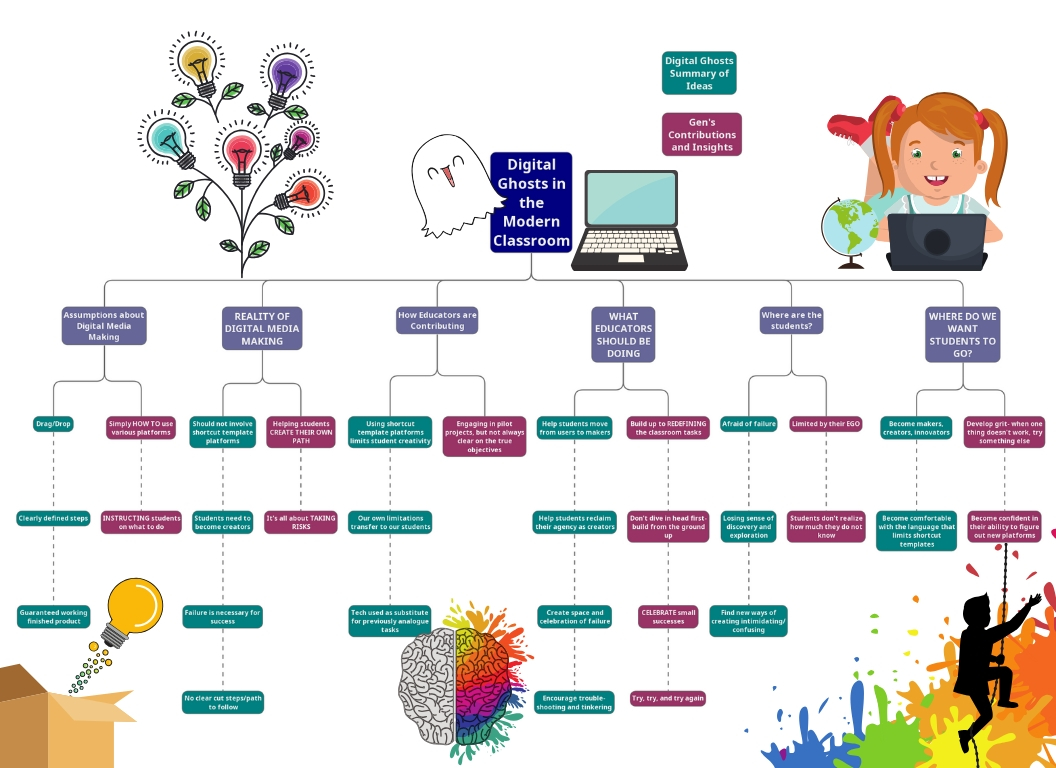




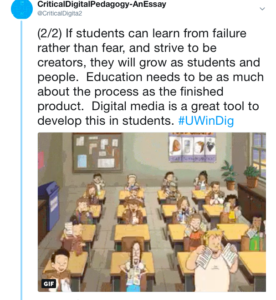
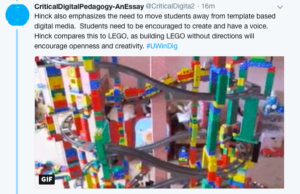

 This expands upon the way that students use technology; they stick to what they know, limit themselves creatively with the shortcut/template options and hope and pray they followed the right steps to avoid failure. Yes, it is possible to have some imagination when it comes to these predetermined templates, but students still have to ensure that their creativity fits. It is unfortunate that these applications and technologies are programmed this way because it limits innovation, creativity and openness for students. Hinck concludes with ways in which we as educators can make the transition from the step-by-step linear instruction to a more open-ended, discovery-based way to implement technology in the classroom, and ultimately learning in general. If we give students the opportunity to try, fail, revise and succeed, students will be better equipped to become makers, creators and critical thinkers.
This expands upon the way that students use technology; they stick to what they know, limit themselves creatively with the shortcut/template options and hope and pray they followed the right steps to avoid failure. Yes, it is possible to have some imagination when it comes to these predetermined templates, but students still have to ensure that their creativity fits. It is unfortunate that these applications and technologies are programmed this way because it limits innovation, creativity and openness for students. Hinck concludes with ways in which we as educators can make the transition from the step-by-step linear instruction to a more open-ended, discovery-based way to implement technology in the classroom, and ultimately learning in general. If we give students the opportunity to try, fail, revise and succeed, students will be better equipped to become makers, creators and critical thinkers.
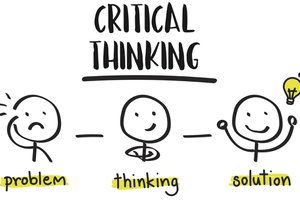
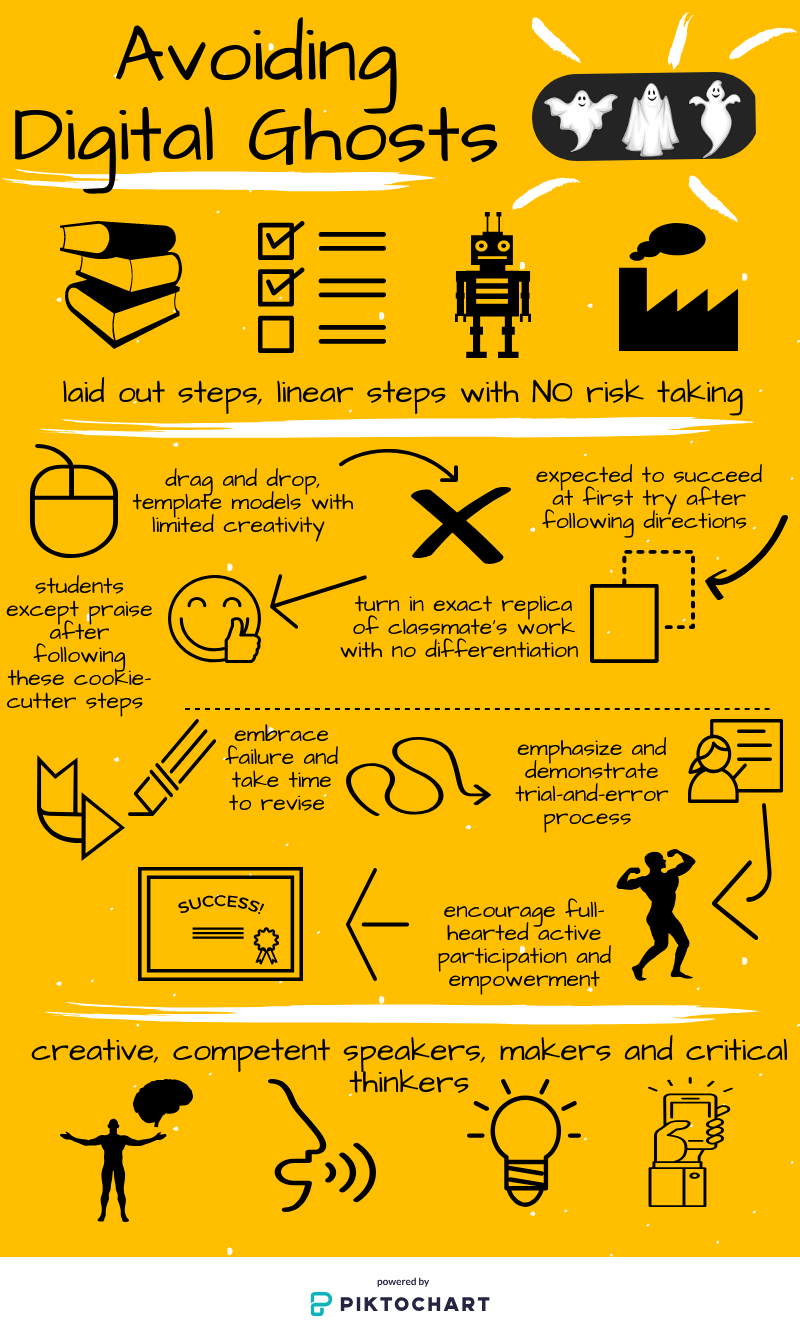
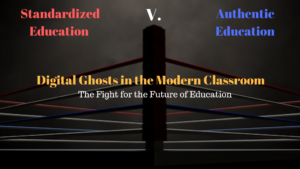


 within the selected template. These learning apps and platforms invite students to follow the directions, get the right answer, turn it in, and get praise. Although many teachers will claim to be moving towards a more authentic way of educating children, either purposely or without knowing these websites and platforms used by teachers reflect the old way of teaching and learning, which views students as containers to be filled with the right answers by teachers. Unfortunately even when these platforms and websites are absent from classrooms they are still affecting student learning, instead we as educators need to help our students move away from users of shortcut/template platforms to makers, creators and critical thinkers.
within the selected template. These learning apps and platforms invite students to follow the directions, get the right answer, turn it in, and get praise. Although many teachers will claim to be moving towards a more authentic way of educating children, either purposely or without knowing these websites and platforms used by teachers reflect the old way of teaching and learning, which views students as containers to be filled with the right answers by teachers. Unfortunately even when these platforms and websites are absent from classrooms they are still affecting student learning, instead we as educators need to help our students move away from users of shortcut/template platforms to makers, creators and critical thinkers.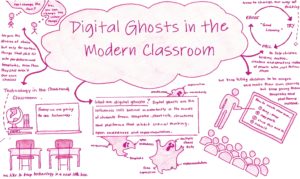 dium for my response because after exploring a few of the other options I was a little intimidated by needing to create something digitally. Additionally, after reading the article which spoke about online platforms limiting creative freedom I felt as though this medium just made sense because it would allow me to get my genuine untouched thoughts across. If I were to use this medium again for a similar purpose I would spend more time brainstorming and planning my Sketchnote before getting started.
dium for my response because after exploring a few of the other options I was a little intimidated by needing to create something digitally. Additionally, after reading the article which spoke about online platforms limiting creative freedom I felt as though this medium just made sense because it would allow me to get my genuine untouched thoughts across. If I were to use this medium again for a similar purpose I would spend more time brainstorming and planning my Sketchnote before getting started.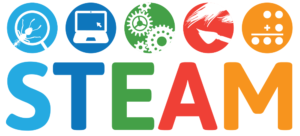 M is about incorporating the arts into math, science and technology but by using these shortcut/template websites and platforms we are limiting the range of creative freedom for students trying to create when using technology. Secondly, I think that we need to give students the tools to critically reflect on these platforms on their own. By teaching our students to think critically and analytically they can start finding these digital ghosts themselves and find alternative ways to create digitally that allow them to use all of their own authentic ideas.
M is about incorporating the arts into math, science and technology but by using these shortcut/template websites and platforms we are limiting the range of creative freedom for students trying to create when using technology. Secondly, I think that we need to give students the tools to critically reflect on these platforms on their own. By teaching our students to think critically and analytically they can start finding these digital ghosts themselves and find alternative ways to create digitally that allow them to use all of their own authentic ideas.